Busan National Science Museum (국립부산과학관)
16.3Km 2023-02-13
59, Dongbusangwangwang 6-ro, Gijang-gun, Busan
+82-51-750-2300
Busan National Science Museum was established to promote the wonders of science and provide visitors with an opportunity to enjoy everything science has to offer. Themed exhibitions related to vehicles, spaceships, and energy development led by the cities of Busan, Ulsan, and Gyeongsangnam-do are available. The museum aims to promote a further understanding of science.
Museum of the ancient tombs in Daseong-dong (대성동고분박물관)
16.6Km 2023-01-02
126, Gayaui-gil, Gimhae-si, Gyeongsangnam-do
+82-55-350-0401
The Museum of the ancient tombs in Daseong-dong displays artifacts unearthed from the four excavations of the Daeseongdong Tumuli. Highlighting often overlooked relics of the Geumgwan Gaya, the museum has three ground-floor exhibit halls and several underground auxiliary facilities. The main exhibits include a life-sized statue of a mounted soldier and a warrior statue, both recreated based on bones excavated from the tumuli of Yean-ri. The museum relies heavily on videos and dioramas to help visitors explore all the museum has to offer.
Ancient Tombs in Daeseong-dong, Gimhae (김해 대성동 고분군)
16.6Km 2020-04-02
126, Gayaui-gil, Gimhae-si, Gyeongsangnam-do
+82-55-330-3934
The tumuli in Daeseong-dong, located to the east of the Royal Tomb of Kim Suro, reflect the formation and development of the Gaya Era. The Daeseong-dong Tumuli are located in the center of the shell mounds of Hoehyeon-ri, the location of the founding of the Gaya Kingdom according to local legend.
The tumuli relics were excavated by researchers from the Kyungsung University Museum from 1990 to 1992 and were found to be the common burial ground of the dominant class of the Gaya Kingdom. On the hilltops, which were viewed as prime burial places, are the tombs of kings and rulers; on the slopes are the tombs of the lower classes.
A total of 136 tumuli were found in the Daesong-dong area. Further investigation of the tumuli revealed several important and interesting facts. First, from the end of the third century, men and horses were buried alive along with the dead. Also, weapons were bent and buried as well, with many of these artifacts being unearthed among the tumuli. Other materials found in the tumuli such as cylindrical bronze items, pinwheel-shaped bronze items, and jasper items showed that Gaya was involved in trade with Japan. The Daeseong-dong Tumuli is significant in that it gives a glimpse into the political and social structure of the Gaya Kingdom, and the cultural exchange between Korea, China, and Japan.
Tomb of Queen Consort of King Suro (김해 수로왕비릉)
16.6Km 2020-04-04
1, Garak-ro 190beon-gil, Gimhae-si, Gyeongsangnam-do
+82-55-338-1330
Tomb of Queen Consort of King Suro in Gusan-dong, Gimhae is the final resting place of Queen Heo, the Queen Consort of King Suro, the founder of Garak. The tomb dates all the way back to the Gaya dynasty and has been officially designated as Historic Site No. 74. Unlike many other ancient tomb mounds that are raised on flat land, Queen Heo's mound sits high upon a hill. In front of the tomb is Pasa Stone Pagoda, which its stones are known to have come from India.
Together with the Tomb of King Suro, the tomb preservation area was expanded in the 28th year of King Sejong’s reign (1446). Records indicate that the tombs were robbed over a century later during the Imjin War (1592-1598). The current headstone and plaque by the tomb was installed in the Joseon dynasty in the 25th year of King Injo's reign (1641).
Blackup Coffee (블랙업커피 양산)
16.6Km 2024-03-27
11 Mulgeumyeok 1-gil, Mulgeum-eup, Yangsan-si, Gyeongsangnam-do
Blackup Coffee, a café with a stunning view of the Nakdonggang River, is known for its signature Haesuyeom coffee (sea salt coffee), a unique blend enriched with natural sea salt and homemade fresh cream. This café has risen to fame for its exceptional coffee taste, a testament to their meticulous roasting process that highlights the qualities of premium beans. Additionally, Blackup Coffee also offers classes for customers interested in learning latte art and pour-over brewing techniques.
Skyline Luge Busan (스카이라인 루지(부산))
16.7Km 2025-04-15
205 Gijanghaean-ro, Gijang-gun, Busan
Skyline Luge was first invented 32 years ago in Rotorua, New Zealand. It is currently a popular sport, with over 40 million rides recorded worldwide. Now, lugin facilciities are operated in six regions worldwide, including Busan. Skyline Luge Busan is a representative outdoor experiential amusement facility at Osiria Theme Park in Dongbusan. It has various auxiliary facilities with the beautiful sea as a backdrop and is a popular activity for the whole family. Take the Skyride lift o the starting point, get on the specially designed luge cart for down riding, and enjoy a thrilling 2.4-kilometer ride down from four tracks.
Busan Hongbeopsa Temple (홍법사(부산))
16.8Km 2022-12-27
202, Dugu-ro 33beon-gil, Geumjeong-gu, Busan
+82-51-508-0345
Hongbeopsa Temple is located in Geumjeong dugu-dong, Busan and is known for the largest bronze Amida Buddha Statue in Korea at 21 meters. Surrounded by Cheolmasan Mountain and Geumjeongsan Mountain, a beautiful scenery stretching out to Suyonggang River makes one feel as if you were in Yeonhwajang, an ideal world in Buddhism that is filled with lotus flowers.
The temple has training rooms for visitors to practice meditation as well as a bust statue of Gandhi, donated by the Government of India to celebrate the 40th anniversary of diplomatic relationship between Korea and India. The temple has a wealth of attractions that cannot be seen in other temples of Korea such as huge statue of Buddha, India Cultural Center, Jeokmyeolbogung Palace, and beautiful gardens, luring an increasing number of tourists every year.
Fisheries Science Museum (수산과학관 (부산))
16.8Km 2021-07-20
216, Gijanghaean-ro, Gijang-gun, Busan
+82-51-720-3061
The Fisheries Science Museum, Korea's first science institute of its kind, was established on May 26, 1997 in order to promote maritime science and technology to the public. The museum was opened after six years of effort by the National Fisheries Science Institute in preparing research and materials regarding marine resources, the fishing industry, fishery and fish farm technology and equipment, taxidermied fish specimens, sea life species, and others. There are a total of 15 separate areas with over 7,400 exhibition items, and even an actual right whale skeleton on display, as well as a room where visitors can learn how to operate a marine vessel.
Haedong Yonggungsa Temple (해동 용궁사(부산))
16.9Km 2025-04-15
86 Yonggung-gil, Gijang-gun, Busan
Haedong Yonggungsa Temple is situated on the coast of the north-eastern portion of Busan. This superb attraction offers visitors the rare find of a temple along the shore line as most temples in Korea are located in the mountains. Haedong Yonggungsa Temple was first built in 1376 by the great Buddhist teacher known as Naong during the Goryeo dynasty.
The main sanctuary of the temple was reconstructed in 1970 with careful attention paid to the colors that were traditionally used in such structures. On the right-hand side, inside a cave, is a uniquely designed Buddhist sanctum, while situated just in front of the main sanctuary is a three-story pagoda with four lions. The four lions symbolize joy, anger, sadness, and happiness. Other special sites at the temple are the 108 stairs and stone lanterns lining the rocky landscape. After going down the 108 steps, one will be delighted with the beauty of the temple. Midway down the 108 steps one can stop and enjoy the calming sounds of the waves, and view the majestic sunrise.
Gimhae National Museum (국립김해박물관)
16.9Km 2024-01-23
190 Gayaui-gil, Gimhae-si, Gyeongsangnam-do
The Gimhae National Museum was opened on July 29, 1998, in order to research and preserve the cultural heritage of the ancient kingdom of Gaya. The museum is at the foot of Gujibong Peak in Gimhae-si, the spot where the kingdom is believed to have been founded. The museum exhibits the cultural assets of Gaya, as well as cultural relics from the prehistoric age in the Busan and Gyeongsangnam-do areas, and the cultural heritage of Byeonhan, which was the foundation for the growth of Gaya.
The exterior of the museum is made using black bricks representing iron ore and charcoal famous during the Gaya Kingdom. There are two exhibition halls, while the walkway to the halls have approximately 1,300 artifacts in display.
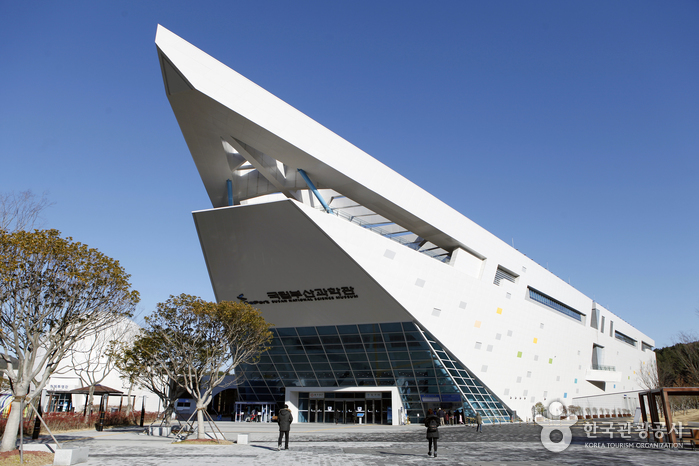
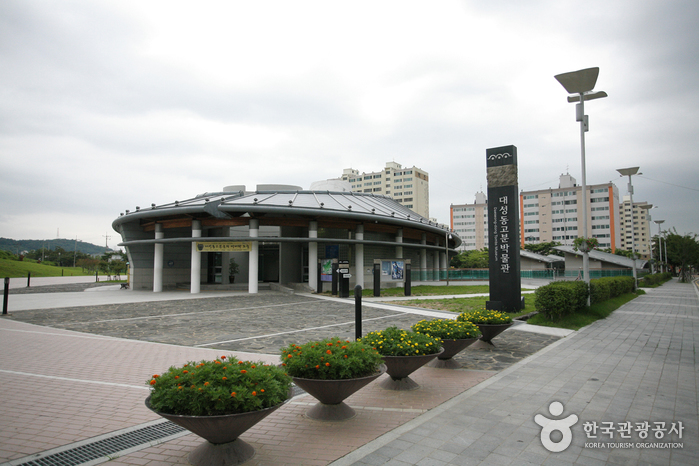

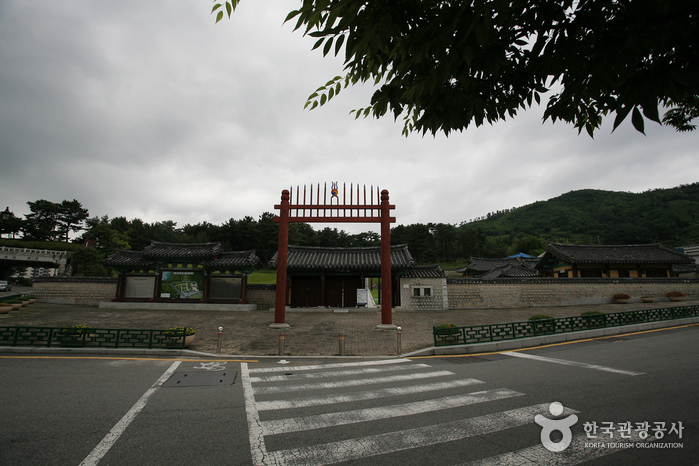
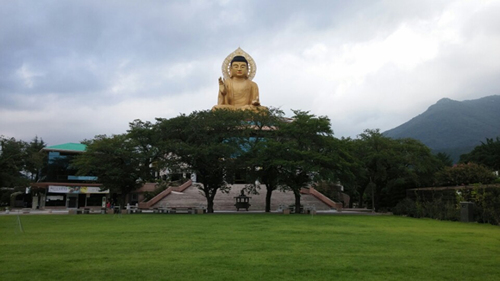
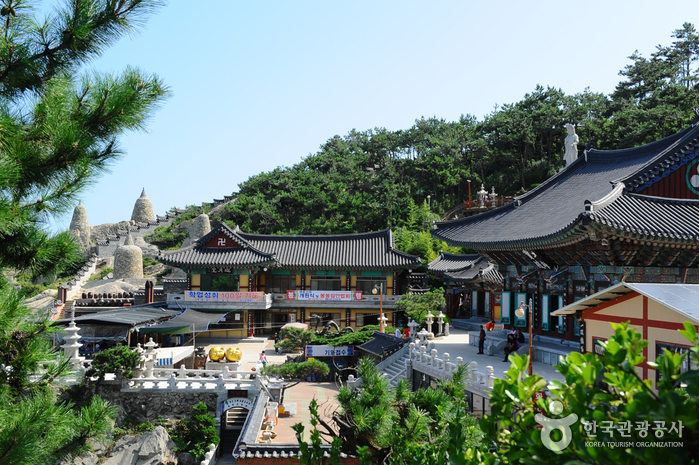
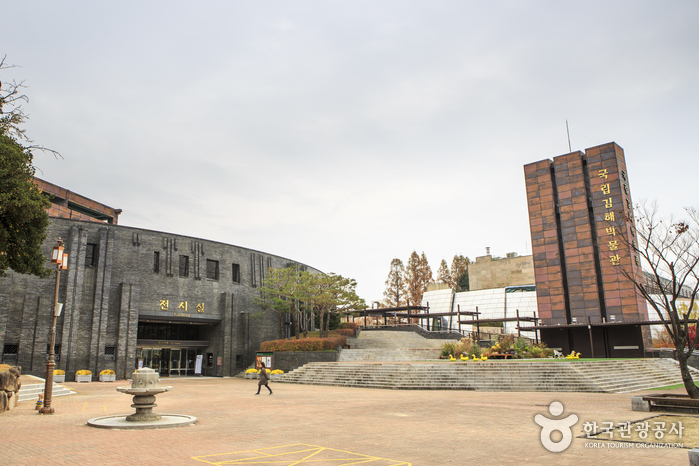
 English
English
 한국어
한국어 日本語
日本語 中文(简体)
中文(简体) Deutsch
Deutsch Français
Français Español
Español Русский
Русский